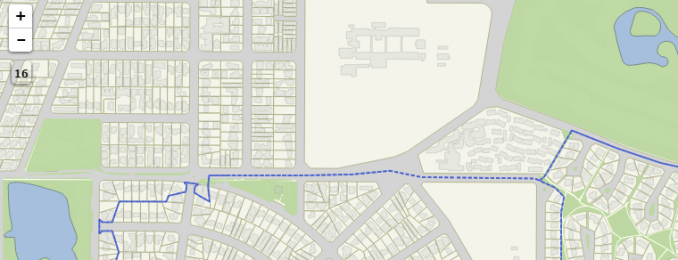
If you need to zoom in and out to check details, use the magnifier tool. This allows you to style the map layers, knowing that they'll look the same in the print version as they do in your canvas. Next, take the scale on your print composer and apply it to the map canvas, then lock it down. Tip: Click "View extent in map canvas" to make your data view mirror your print composer. You can also zoom in this way by using the scroll wheel, but it's easier to go over to the "Item properties" menu and just alter the scale number - you get more flexibility this way. The best way to move the content of the map is by clicking the "pan" tool and then clicking and dragging the map. There are a few ways you can scale and pan the map in the print composer. Once you know that, it's just a matter of re-sizing or scaling. The print composer will always peg what appears in your map to the bottom right-hand corner of what is in your data view.

Once you've got your basic layers added, create a new print composer and give it a name. Thanks to Nyall Dawson for reaching out with some tips and showing us a better way! Our new workflow is to drop in the basic layers and set up the print composer, then go back and do the styling later. After bashing our heads against the keyboard, we've come up with these tips and tricks to guide our new staff through the process.įirst, set up your map in QGIS and make it look nice. We love QGIS, but the print composer can be pretty frustrating at first.
#PRINT MAP QUANTUM GIS SOFTWARE#
We at the American Red Cross are committed to using (and improving) open source software whenever possible.
#PRINT MAP QUANTUM GIS DOWNLOAD#
Get ready to bump up your mapping experience!īe sure to download the Project and data files for the book (URL can be found in Getting Started).QGIS: Tips and tricks for the print composer Written by two of the leading experts in the realm of open source mapping, Anita and Gretchen are experienced authors who pour their wealth of knowledge into the book.

All example data and project files are included. A prior familiarity with basic QGIS capabilities is assumed.

See how QGIS is rapidly surpassing the cartographic capabilities of any other geoware available today with its data-driven overrides, flexible expression functions, multitudinous color tools, blend modes, and atlasing capabilities. With step-by-step instructions for creating the most modern print map designs seen in any instructional materials to-date, this book covers everything from basic styling and labeling to advanced techniques like illuminated contours and dynamic masking.
#PRINT MAP QUANTUM GIS HOW TO#
Learn how to use QGIS to take your cartographic products to the highest level.


 0 kommentar(er)
0 kommentar(er)
